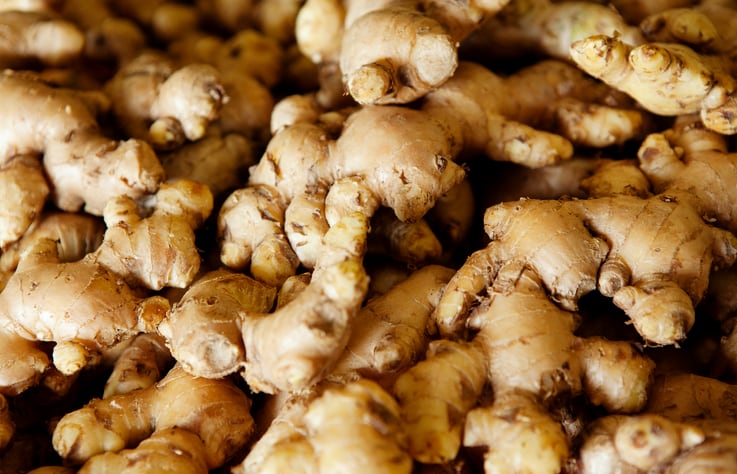This study focused on understanding ginger’s potential effect on muscle ageing. The authors examined its impact on the expression of metabolites (substances produced during metabolism) and their metabolic pathways in the myoblast cells (precursor cells to skeletal muscle). The aim was to clarify how this process works and its pharmacological properties in promoting myoblast differentiation (into skeletal muscle fibres).
This could also be useful for understanding the mechanism of muscle loss in the older population.
The authors note that, “This is the first study highlighting the metabolic alterations in the skeletal muscle cells following ginger extract treatment.”
They concluded that ginger extract has the potential to reduce muscle loss in skeletal muscle. It achieves this by triggering changes in some metabolites and their pathways that could promote muscle regeneration in ageing.
The role of antioxidants
Muscle loss is one of the major diseases associated with people aged 60 and over.
Oxidative stress is one of the major factors that contributes to muscle loss. It happens when there’s an imbalance between reactive oxygen species (ROS) and antioxidants in the body.
Older people’s muscle loss can be reduced through exercise and healthy eating. Antioxidant-rich food can reduce the level of oxidative stress and prevent diseases related to it. Ginger can act as an antioxidant agent.
The effect of ginger as an antioxidant agent on the metabolic pathways of aged skeletal muscle has not yet been reported. However the authors’ previous study showed that ginger improved myoblast differentiation to myotube in culture.
The impact on human cells
The authors studied primary human myoblasts from a 17-year-old woman.
The myoblast cells were cultured into three stages: young, pre-senescent and senescent. At each stage, the myoblasts were treated with different concentrations of ginger extract.
Ginger extract was diluted with complete culture media (CCM) into a series of concentrations: 50, 100, 200 and 300 µg/mL. Different ages of cells were treated with different ginger extract doses.
After this process, researchers carried out metabolomic analysis using liquid chromatography-tandem mass spectrometry (LCMS/MS).
Conclusions
For the young ginger-treated group, 8-shogaol and valine were upregulated (valine is an essential amino acid for muscle protein synthesis and maintenance). Adipic acid (a product of oxidisation) and bis (4-ethyl benzylidene) sorbitol decreased.
In the pre-senescent ginger-treated group, niacinamide was upregulated, while carnitine and creatine were downregulated. Ginger treatment in the senescent group caused a significant upregulation in 8-shogaol, octadecanamide (a metabolite proven to increase anti-inflammatory activity) and uracil.
The authors say that this suggests, “Ginger extract has the potential as a pharmacological agent to reduce muscle loss in skeletal muscle by triggering changes in some metabolites and their pathways that could promote muscle regeneration in ageing.”
“The findings of this study could provide valuable insights into the precise mechanisms through which ginger impacts muscle cells, enhancing our comprehension of its potential benefits.”
They add it may be necessary for future research to integrate metabolomics data with genomics, transcriptomics and proteomics data to achieve a more comprehensive understanding.
Source: Nutrients
https://doi.org/10.3390/nu15214520
"Elucidating the Pharmacological Properties of Zingiber officinale Roscoe (Ginger) on Muscle Ageing by Untargeted Metabolomic Profiling of Human Myoblasts"
Authors: Mohd Sahardi, N.F.N.; Jaafar, F.; Tan, J.K.; Mad Nordin, M.F.; Makpol, S.


